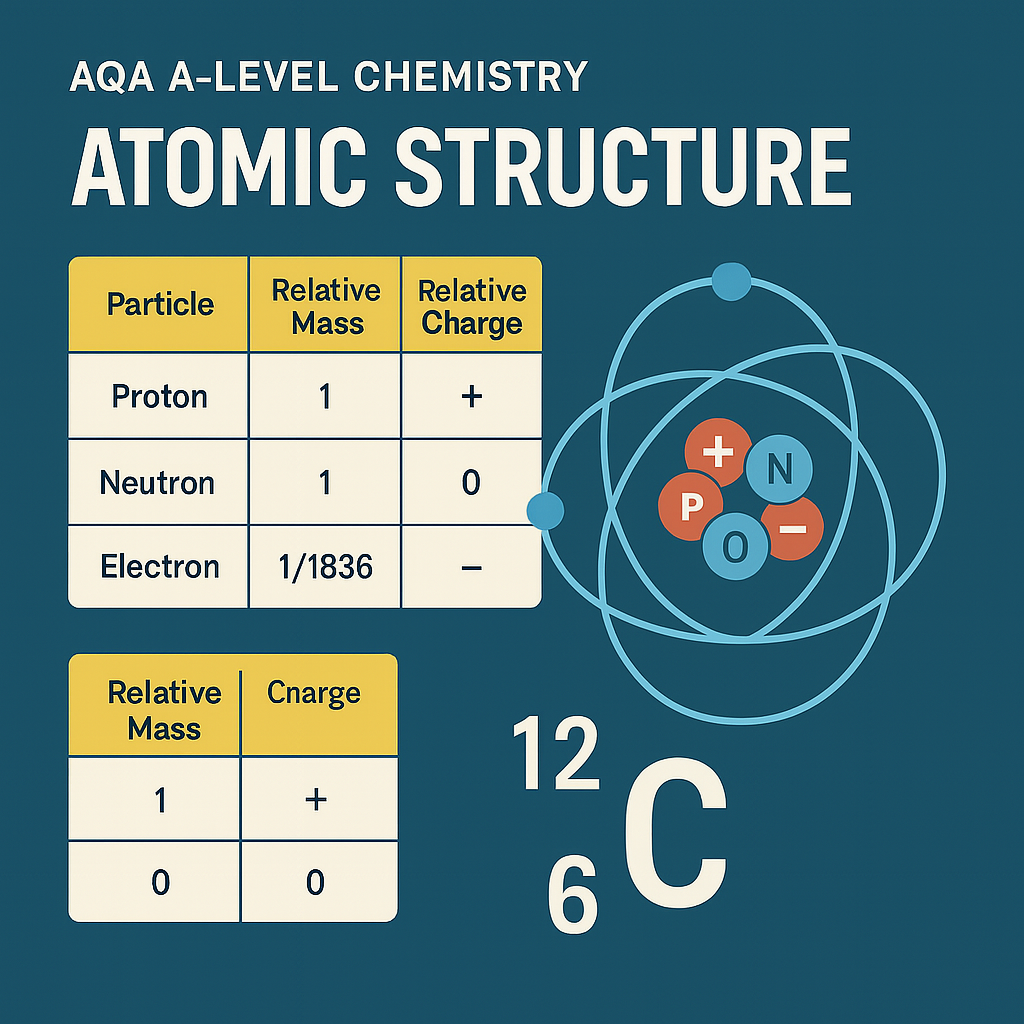How to Structure Your Chemistry Notes for IB Success
IB Chemistry is tough—but a student who consistently builds structured, clear, visual, and exam-aligned notes has a huge advantage.
IB Chemistry is known for being content-heavy, conceptually demanding, and packed with detail. Whether you’re taking Standard Level (SL) or Higher Level (HL), having well-structured notes can be the difference between chaos and clarity, between a grade 5 and a grade 7. But how do you actually structure your notes so that they’re useful when it matters most—like during revision, practice questions, or your Internal Assessment?
This guide gives you a proven strategy for taking, organising, and using your chemistry notes throughout the two-year IB journey—so they’re revision-ready, exam-focused, and aligned with how IB Chemistry is assessed in 2025 and beyond.
Why Good Note Structure Matters in IB Chemistry
Many IB Chemistry students fall into the trap of just “copying down what the teacher says” or mindlessly transcribing slides. This approach often leads to piles of scattered, unreadable information with no sense of priority or connection.
Instead, effective note structure helps you:
Understand how each concept fits into the syllabus themes (Structure, Reactivity, Energy, Identity)
Spot patterns, links, and applications across topics
Revise efficiently—no re-learning from scratch
Prepare faster for Paper 1, 2 and 3, and the Internal Assessment (IA)
Structured notes don’t just help you remember—they help you think like a chemist.
Start With the IB Chemistry Syllabus (2025)
Before writing a single note, you need to know what to focus on. The 2025 IB Chemistry syllabus is structured around 4 themes and 16 concepts.
The core themes are:
Structure
Reactivity
Energy
Identity
Each unit you study links to one or more of these themes. You can download the full IB Chemistry Guide or use syllabus checklists (from your textbook, online resources, or tutoring platforms) to map your notes around what’s actually assessed.
✅ Tip: Create a front page or spreadsheet index for your notes that tracks each sub-topic by:
Theme (e.g. Energy)
Topic number (e.g. 8.1: Enthalpy changes)
SL or HL level
Status (e.g. “complete,” “revise,” or “needs reworking”)
Pick a Note-Taking Format That Works for You
Different students learn in different ways—but for IB Chemistry, your notes should include:
Definitions and key terms
Diagrams and structures
Equations and units
Examples and worked problems
Exam tips and command words
Common misconceptions or traps
Popular methods include:
1. The Cornell Method
Split each page into 3 sections:
Left column: keywords and questions
Right column: detailed notes and explanations
Bottom summary: your own recap of what’s important
This method is great for reviewing later—you can cover the right side and quiz yourself with the questions.
2. Mind Maps
Useful for visual learners, mind maps help you see connections between subtopics. For example, in Organic Chemistry you could create a “reaction pathways” map linking alcohols, aldehydes, ketones, acids, and esters.
3. Flashcard-First Note-Taking
If you're revising as you learn, create notes designed to become flashcards (e.g. using Anki or Quizlet). Write questions on one side and definitions, explanations or diagrams on the other.
4. Digital Notes with Folders (e.g. OneNote, Notion, Google Docs)
Organise your content by topic folders and tag notes with syllabus references. Add colour-coded highlights for:
Yellow = Key definition
Blue = Required calculation
Green = Real-world application
Red = Common mistakes
Structure Your Notes by Topic, Not Just by Chronology
Instead of writing notes in the order you’re taught them, build topic-based collections. This makes revision vastly easier and helps you see the bigger picture.
Example structure for the topic “Acids and Bases”:
Definitions (Bronsted–Lowry, conjugate pairs, pH, pKa, etc.)
Reactions and equations
Diagrams (e.g. titration curves, pH scale)
Calculations (e.g. pH, Ka, Kw, buffer equations)
Lab techniques (e.g. titration apparatus, indicators)
Real-world examples (e.g. stomach acid, water treatment)
Common misconceptions
Sample IB-style questions
This format can be repeated for every syllabus topic.
Use Colour-Coding to Visually Organise Content
Colours are powerful memory aids—but they need consistency. Here's a suggested colour scheme:
Blue – Definitions and formulas
Green – Worked examples
Red – Common mistakes or tricky concepts
Purple – Exam command words and IB tips
Black – Main content
When used consistently, colour helps your brain quickly spot what’s essential when skimming notes before an exam.
Integrate Past Paper Questions Into Your Notes
Every topic should have a section for practice questions—preferably from IB past papers. Doing this helps you:
Learn how IB examiners word questions
Practise applying knowledge in context
Avoid surprises in Paper 2 and Paper 3
Use one page or section to write:
3–5 short past paper questions
Model answers with mark scheme keywords
Commentary on what made the answer good
Any trap questions or alternative phrasing
✅ Pro Tip: Include the actual command words used (e.g. “deduce,” “outline,” “explain”)—this trains you to respond precisely.
Make a Chemistry Diagrams Bank
Some concepts (like molecular geometry, electrolysis, titration, or reaction mechanisms) are best understood visually. Create a dedicated diagrams section in your notebook or digital notes.
This could include:
Labeled apparatus (e.g. for calorimetry, reflux, titration)
Structural formulas of molecules and ions
Energy profile diagrams
Reaction mechanisms with curly arrows
Spectra for Paper 3 (mass spec, IR, NMR)
Sketching diagrams yourself also deepens learning, especially in Organic Chemistry.
Add Real-Life Applications to Make Concepts Stick
IB Chemistry values contextual learning. If you can relate a concept to a real-life example, you’re more likely to remember it—and explain it well in your IA or Paper 2.
For example:
Buffers in blood (HCO₃⁻/H₂CO₃ system)
Redox reactions in batteries
Enthalpy in food energy calculations
Green chemistry in water purification
Add a mini "real-world connection" box at the end of each topic.
Create a Glossary of Key Terms and Equations
Use a separate section (or appendix) in your notes to build:
A glossary of definitions
A list of key equations with variables and units
Constants and reference values from the Data Booklet
Common prefixes and SI units
This becomes your quick-access reference for both exam revision and lab work.
Update Notes Regularly Based on Teacher Feedback or Test Results
Your notes are not static—they should evolve as your understanding deepens. Use:
✅ Symbols for content you’ve mastered
❓ Symbols for unclear concepts
📌 Sticky notes or highlights for teacher tips or corrections
After every test or topic review, revisit your notes and add corrections, reflections, or extra examples. This active revision reinforces memory and closes knowledge gaps early.
What Not to Do With Your Notes
❌ Don’t write everything verbatim from the textbook or lesson slides
❌ Don’t highlight everything—use colour intentionally
❌ Don’t let notes sit untouched until exam season
❌ Don’t skip diagram-based topics
❌ Don’t separate definitions from the contexts they apply in
Bonus: How to Turn Notes into Active Revision
Once you have well-organised notes, use them to power your revision strategy. Here’s how:
Use your notes to make flashcards (digital or paper)
Summarise each topic in 1-page cheat sheets
Teach a friend using your notes—this reveals gaps
Convert key processes into flowcharts or timelines
Use your own notes to answer IB-style past paper questions
If your notes are structured well, your revision is 10× easier—and your results will show it.
Sample Topic Structure: Redox Reactions
Here’s an example of what a well-structured note set for a specific topic could include:
Topic: Redox Reactions
Theme: Reactivity
Level: SL/HL
Definition of oxidation, reduction, oxidising/reducing agents
Rules for assigning oxidation numbers
Worked example: assign oxidation states to HNO₃
Redox half-equations with balancing
Electrochemical cells and cell notation
Diagram of voltaic cell with salt bridge
Example: Daniell Cell (Zn/Cu)
IB Command words: “deduce”, “explain”, “predict”
Real-life connection: redox in breathalyser tests
Past Paper Question: May 2022, Paper 2 Q6
Model answer with examiner comments
Common error: confusing electron flow with current direction
This kind of note format is gold for revision—and mirrors what examiners expect.
Tools and Apps to Help Structure Notes
GoodNotes / Notability – Handwritten digital notes with colours and diagrams
Notion – Customisable databases for topic-by-topic notes
Anki – Spaced repetition flashcards with chemistry decks
Google Docs – Easy collaboration and quick access across devices
ChemSketch / MolView – Drawing molecules for organic topics
Past Papers.IO / Revision Village – Sources of exam-style questions
Use what fits your workflow, but be consistent.
Final Thoughts: Notes Are Your Secret Weapon
IB Chemistry is tough—but a student who consistently builds structured, clear, visual, and exam-aligned notes has a huge advantage. You don’t need to be the smartest in the room—you just need to be the most organised.
Treat your notes as a living resource: update them, personalise them, and use them actively. If you do, you’ll not only reduce exam stress—you’ll increase your chances of scoring a level 6 or 7.
Need Help Getting Your Chemistry Notes in Shape?
Book a 15 mins consultation with Dr Marguerite Quinn, expert IB Chemistry tutor. Whether you need help revising a topic, tackling past papers, or structuring your revision notes, expert one-to-one support can help you take control of your IB Chemistry journey.





Understand AQA A-Level Chemistry Section 3.1.1.2 on mass number and isotopes. Learn key definitions, isotope notation, calculations, and how this topic builds your scientific and exam skills.